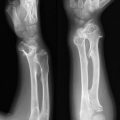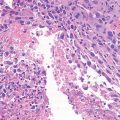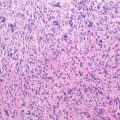Piero Picci, Marco Manfrini, Nicola Fabbri, Marco Gambarotti and Daniel Vanel (eds.)Atlas of Musculoskeletal Tumors and Tumorlike Lesions2014The Rizzoli Case Archive10.1007/978-3-319-01748-8_3
© Springer International Publishing Switzerland 2014
3. General Principles of Bone Pathology
(1)
Department of Anatomy and Pathology, Istituto Rizzoli, Bologna, Italy
Abstract
Bone tumors are among the rarest neoplasms in humans. They account for about 0.8–1 % of all malignancies arising in the body. If we consider that more than 40 bone malignant neoplasms have been described, it is reasonable to think that only large specialized centers may have enough experience with some of them. The peculiar multidisciplinary approach is mandatory in bone tumors, in order to avoid dramatic mistakes. The pathologist dealing with bone must follow a diagnostic flowchart that starts from the accurate collection of clinical information, followed by the careful examination of the imaging, then the decision about the kind of diagnostic procedure to apply, and finally the histological diagnosis. All these steps must be shared with colleagues of the team, the orthopedic surgeons, the radiologists, and the oncologists that will establish the proper treatment after diagnosis. In the last years, pathologists have started to collect biologic samples of fresh tumor tissue to store in biobanks that are necessary for the study of these rare tumors, because of the possibility to perform molecular analyses and to share tissue samples with other institutions in the context of large international scientific projects. Examining in detail every single step of the diagnostic approach, analysis of clinical features, such as patient age, symptoms, and anatomic location of the lesion, is necessary for a preliminary assessment of the lesion. Bone tumors like Ewing sarcoma and osteosarcoma usually occur in young patients. Tumors like chordoma, myeloma, and chondrosarcoma are typical of adults or elderly patients. When osteosarcomas occur in patients older than 50, they are frequently secondary to preexisting bone conditions, such as Paget’s disease and bone infarcts, or arising after radiation therapy. Symptoms and features are frequently of great clue for diagnosis. Pain during the night that can be treated with salicylates is typical of osteoid osteoma; the presence of fever favors for the diagnosis of Ewing sarcoma rather than lymphoma. An accurate collection of clinical information is mandatory for detection of a primary tumor in case of metastasis to the bone; the blood levels of parathormone are the key feature for diagnosis of hyperparathyroidism. The site of the tumor within the bone and the specific bone segment are very important. Some tumors occur usually in the epiphysis, such as giant cell tumor, chondroblastoma, and clear cell chondrosarcoma; most tumors are centrally located, while others are eccentrically located in the bone cortex; others, such as adamantinoma, occur almost exclusively in the tibial diaphysis. In low-grade chondroid lesions, the site of the lesion is very important for a correct interpretation of histology: if the lesion is in the small bones of the hands and feet, it is usually benign, while, with the same histological features, it is usually malignant if located in the ribs and sternum. Lesions that arise in the periosteum are generally clinically less aggressive than the medullary counterparts. The radiographic features of the lesion as well are very important for the pathologist: they have to be considered like a negative image of the macroscopic appearance of the neoplasm. Bone lesions can cause osteolysis or reactive bone production (osteosclerosis). Combinations of these two processes give three typical patterns of bone destruction:
Stay updated, free articles. Join our Telegram channel

Full access? Get Clinical Tree







